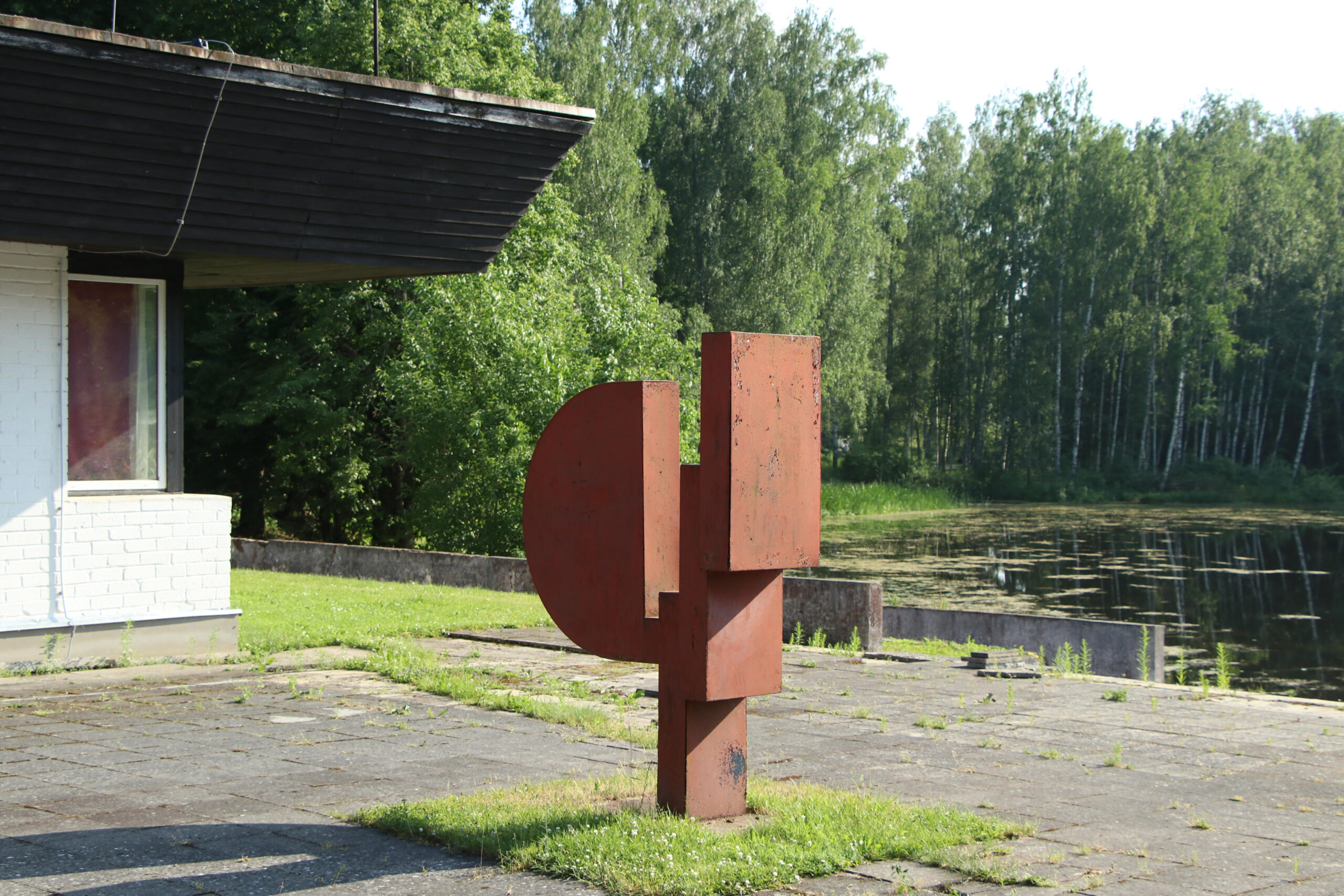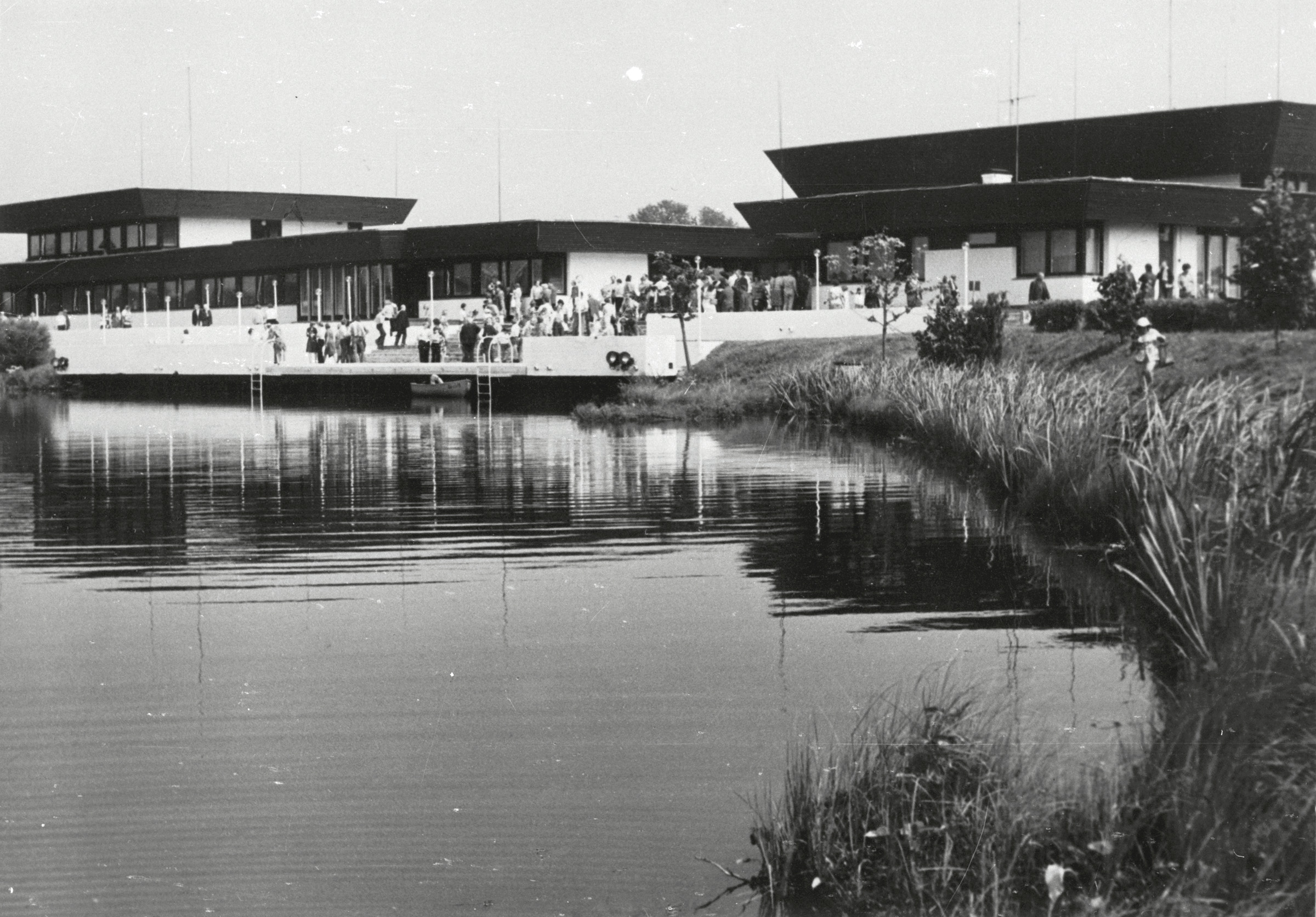Decorative sculpture Konstruktsioon XIV (Kukk) (“Construction XIV (Rooster)”) in Linda Collective Farm’s Centre
Year of completion: 1970, installed 1973
Address: Võru County, Kobela
Author Jaak Soans
Steel, paint
Height 2,5 m
Not listed as a cultural monument
Linda collective farm operated in Võru County; its centre was located in the beautiful small town of Kobela. In the 1960s, the collective farm office operated in a bland small building but by the end of the decade, the collective farm, which had considerably expanded during the favourable economic reforms, began construction a new centre on the shore of Boose lake. It was a time when economic entities tried to outdo each other with increasingly magnificent constructions.
Collective farm workers of the time say that quite good things can be accomplished when smart leaders and “the right men” cross paths. Kobela, with its eye-catching communal buildings and practical individual residences, is a great example of this tendency. The central building was designed by architect Toomas Rein (1940) of the EKE Projekt art institute, the interior architect was chosen to be Aulo Padar, fresh graduate of the Estonian Academy of Arts. They developed a trusting relationship with the chairman of the collective farm, Arvo Taal, who later became Deputy Chairman of the Presidium of the Supreme Soviet of the ESSR, filling in for Johannes Käbin. It can be said that Rein and Padar had fun with the project. It is one of the most impressive examples of “cornice architecture,” resting fashionably on the lake shore and opening up to numerous directions with its cheery window walls. Padar managed to create a uniformly functioning room in the interior architecture, with one of its flashy features being a foldable sliding wall that separated the roomy lobby from the great hall. Upon opening the sliding wall and the lake-facing glass doors, the grandiose impression of a flowing room was born. Toomas Rein, together with engineer Jaan Port, was granted the Soviet Estonian Prize for the building in 1975.
The extent of the building’s modernity at the time is emphasised by the abstract sculpture by Jaak Soans placed on the lake-facing terrace. In the early 1960s, Kalju Reitel conducted welding courses for sculptors, which were exceptionally popular. The artworks created were exhibited in the lobby of the Academy of Sciences building, and later on exhibitions of experimental decorative sculptures took place in Pirita Lillepaviljon. Soans, who was enthused by constructivism and abstract form culture, heartily went along with the wave. In 1970, Konstruktsioon XIV (“Construction XIV”) was born and caught the eye of the Kobela architects, and so it was decided, following the example of Alexander Calder, to move the Kukk (“Rooster”) sculpture, which was painted red, to the shore of Boose Lake.
The condition of the former office-clubhouse is not very good. Although a shop, library, and community centre operate in the building, its original interior has been destroyed, and the three owners of the house have not managed to update it together. A third of the house has been standing without use for years and is on sale. The sculpture is rusted, a large portion of the colour has peeled off. Restoring it would most likely be too difficult of a task for most. At the same time, it is the artwork of one of the most important Estonian sculptors of the 20th century, with a high art-historical value. The building was advised to be taken under conservation as an architectural monument by the expert evaluation of the National Heritage Board in 2010, but nothing has been done following that. Unfortunately, it seems that it is difficult to find a new use for the building, in order to conserve the entire complex, in the small town that has diminished noticeably since the Soviet Era.
Gregor Taul








